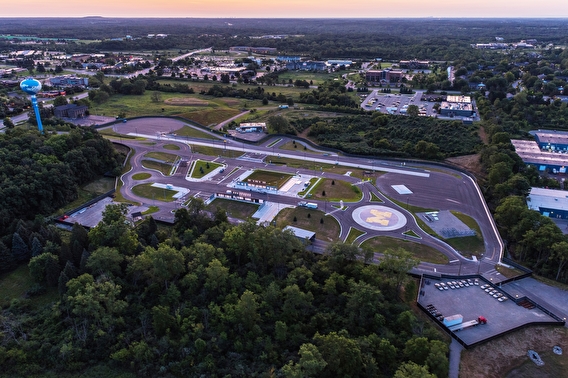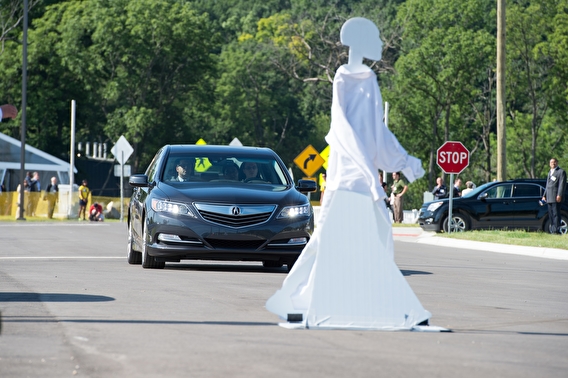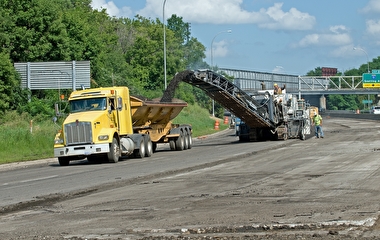
In Indiana, researchers at Purdue University studied their monitors with anticipation as they “drove” a vehicle 200 miles away at the University of Michigan, watching as the real-world autonomous vehicle test car dodged simulated vehicles while navigating through a complex driving course.
As part of the Center for Connected and Automated Transportation (CCAT) consortium—of which CTS is a partner—researchers at the two universities were conducting the first remote test of the Mcity 2.0 test facility in November 2023.
“Mcity is a physical infrastructure overlayed with a digital infrastructure that is available for remote access,” said Mcity’s director Henry Liu in his Warren Distinguished Lecture at the University of Minnesota’s College of Science and Engineering. (Liu, a former U of M civil engineering faculty member, is now a research professor at the University of Michigan Transportation Research Institute.)
Liu explained that Mcity’s “mixed-reality environment” is a comprehensive physical test course combined with ample real-world data from the City of Ann Arbor that researchers can use to run simulations via the cloud.
The Mcity 2.0 facility is part of a larger effort to improve safety assessment for connected and automated vehicles (CAVs) to earn public trust for the technology. According to Liu, ensuring the safety of highly automated vehicles is extremely difficult for two key reasons.

First, CAVs must operate in a very complex driving environment, contending with variations in weather, road infrastructure, road users, and driving maneuvers.
On top of that, CAVs must be prepared for low-probability safety-critical events that are extremely tricky for deep-learning models to handle—“For example, if a CAV was at an intersection with a green light but the cross street has an emergency vehicle turning left. That doesn’t happen a lot, but if the vehicle makes a mistake, this might result in a safety-critical situation,” Liu said.
Creating safe autonomous vehicles will require better training for these challenges. To remedy this, Mcity has developed a safety assessment program: a two-part protocol for testing the behavior competence of CAVs before their widespread use on public roads.
First, a “Driver’s License Test” measures the basic competency of a CAV through random scenario generation. Second, a “Driving Intelligence Test” challenges the AI-based algorithms with a set of scenarios representing those that most often result in crashes, injuries, or fatalities. The aim is to create a blueprint for a publicly inspectable behavior safety framework that will help bring CAV technology to market in a way that benefits society.
Because the University of Minnesota is a CCAT partner, researchers with CTS have access to the Mcity test facility (along with many other university-based facilities) for their CAV research projects. Opportunities for researchers at Mcity include developing AI algorithms, pursuing early-stage development and testing, accessing remote CAV testing resources, and conducting demos and test drives.
—Megan Tsai, contributing writer

